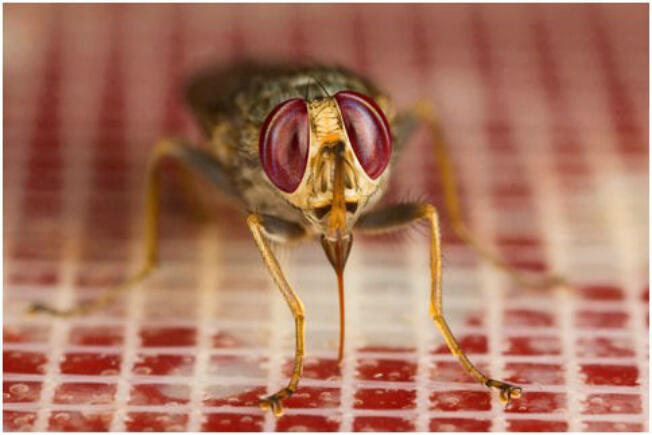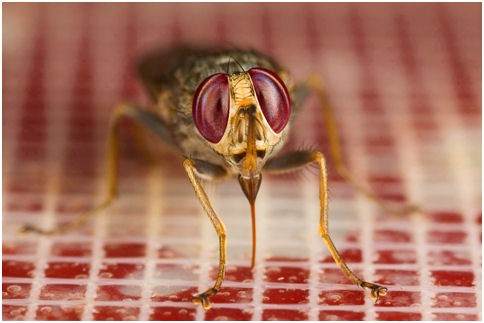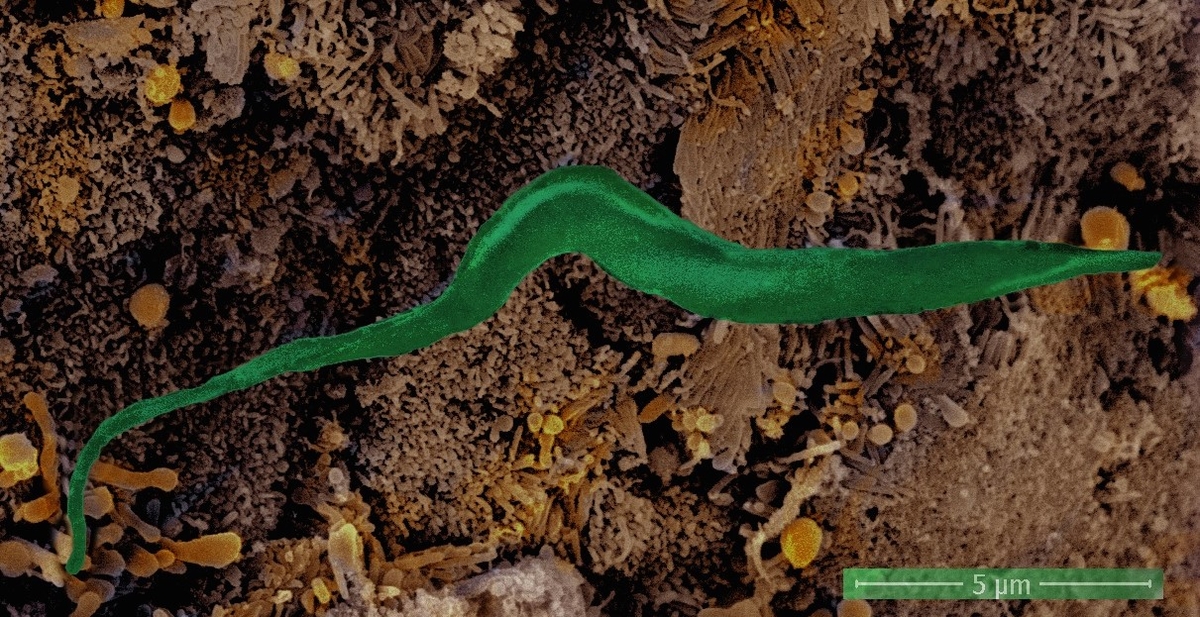
African trypanosomes are responsible for sleeping sickness and animal trypanosomiasis in Sub-Saharan Africa, which are included within the group of neglected tropical diseases (NTDs). These parasites are transmitted by different species of Glossina (also known as tsetse flies; video and Fig. 1). Inside the tsetse, trypanosomes undergo a complex cycle, including the colonization of different tsetse organs (Fig. 2). We use molecular genetics, biochemistry and microscopy methodologies to understand how trypanosomes are able to establish an infection in (and are transmitted by) the tsetse. We also investigate the role of glycans in trypanosome development in the tsetse.
This programme is possible thanks to the large colony (~10000 flies) of tsetse flies at LSTM, which also provides service to other groups within the UK and abroad.
Video fom "Parasites" (4-part documentary series); Filmed at LSTM, broadcasted by EBS (Educational Broadcasting System) South Korea. Producer: Mr. Sung-Woong Park. Broadcast on July 2013. Reproduced with kind permission
 |
|
